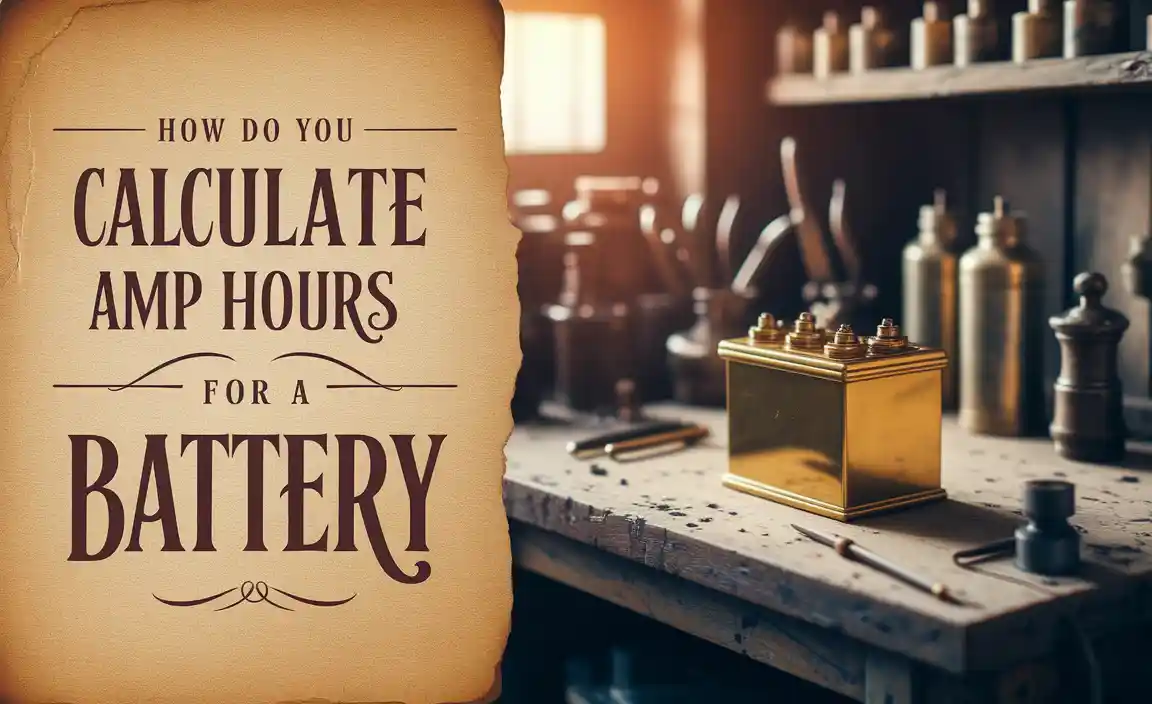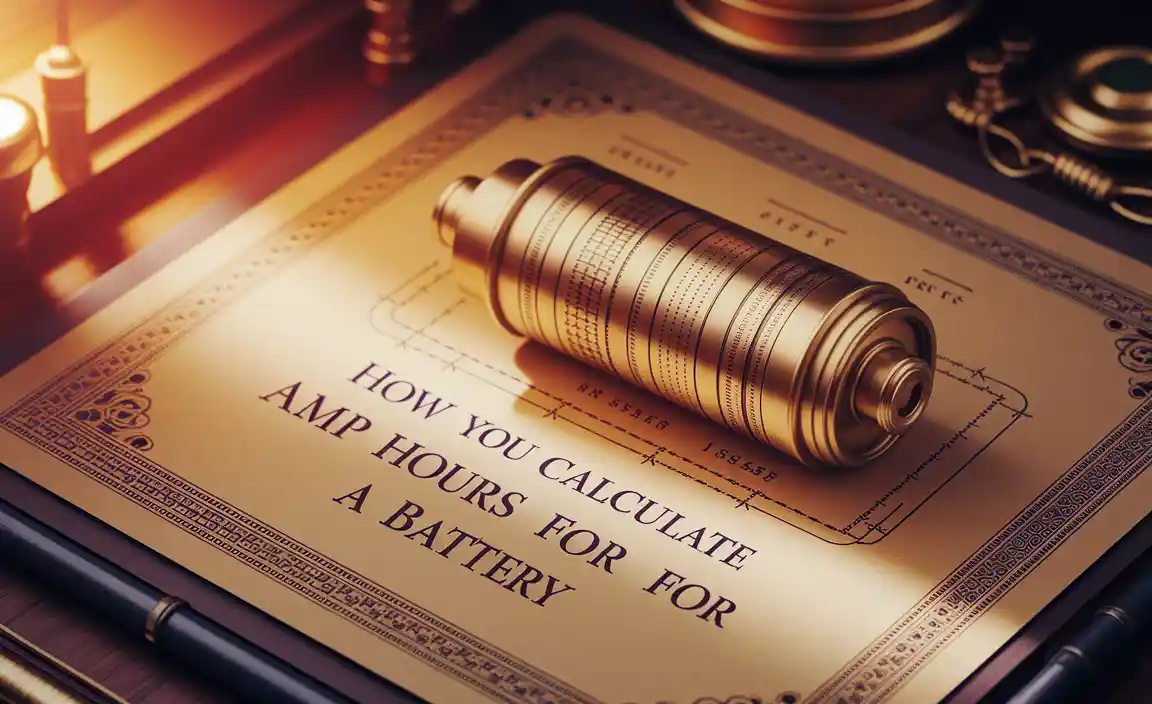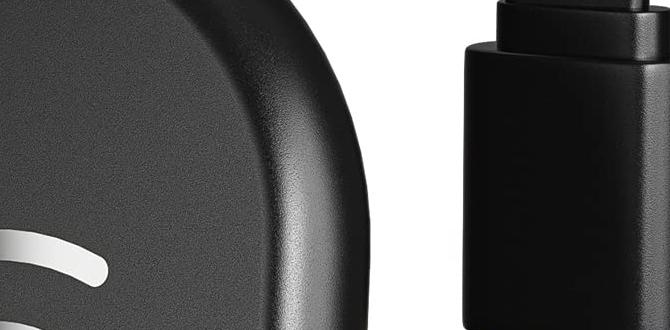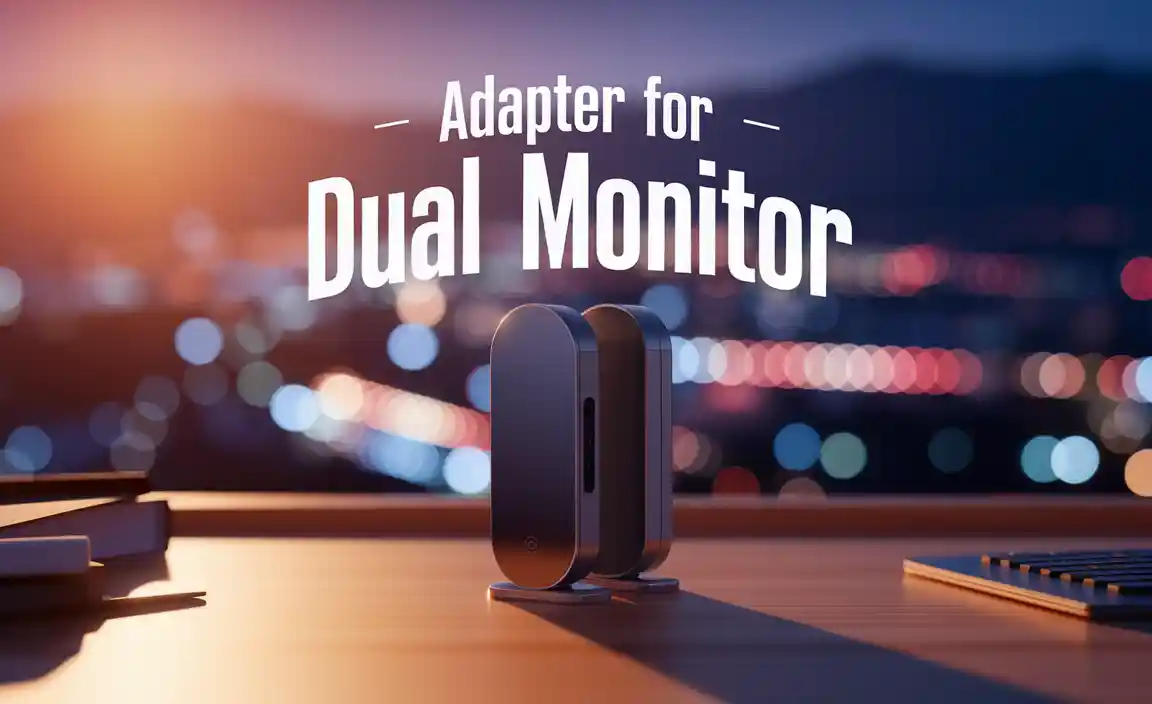Have you ever wondered how long a battery can last? Knowing how to calculate amp hours for a battery can help. It’s like figuring out how much juice is left in your favorite toy or gadget.
Imagine you’re on a camping trip. Your flashlight dims, and you’re stuck in the dark. If you know how to calculate amp hours, you can choose the right battery before you leave. That way, you’ll never get caught without light.

In this article, we’ll break down how to easily understand amp hours. You’ll learn simple ways to do the math and keep your devices powered. Let’s dive in and discover how this important number can make a difference in your daily life!
How Do You Calculate Amp Hours For A Battery System?
Calculating amp hours for a battery helps determine its capacity to store energy. To do this, multiply the current (in amps) by the time (in hours) your device runs. For example, if a battery supplies 2 amps for 5 hours, it provides 10 amp hours. Knowing this can help you choose the right battery for your needs. It’s like picking the perfect snack for a long trip—make sure it lasts!
Understanding Amp Hours
Definition of amp hours (Ah). Importance of amp hours in battery performance.
Amp hours, often written as Ah, measure how much energy a battery can hold. It shows how long a battery can run before needing a recharge. Understanding amp hours is important because:
- It helps you know how long your devices will last.
- You can choose the right battery for your needs.
- It affects the performance of gadgets like robots or toys.
More amp hours mean longer use. Choosing a battery with the right amp hours helps you avoid running out of power too soon!

How do you calculate amp hours for a battery?
You can calculate amp hours with this simple formula: Amp Hours (Ah) = Current (Amps) x Time (Hours). By using this, you can find out how long a battery will work. Just multiply how many amps your device uses by the time it runs!
Components Involved in Calculating Amp Hours
Explanation of voltage and current. Role of battery capacity and discharge rate.
Understanding amp hours for a battery involves a few key parts. First, there is voltage and current. Voltage is like the push that moves electricity. Current is the flow of electricity. Next, look at battery capacity. This tells you how much energy a battery can store. Finally, consider the discharge rate. This shows how quickly the battery uses its energy. Keeping these factors in mind helps you calculate amp hours more easily.
What is voltage and current?
Voltage is the energy that pushes electric charges. Current is how many charges flow through a wire each second. Together, they work like a team to power your devices.
What is battery capacity and discharge rate?
- Battery capacity is the total amount of energy a battery holds.
- Discharge rate is how fast the battery uses its energy.
Formula for Calculating Amp Hours
Breakdown of the standard calculation formula. Examples of calculations using different scenarios.
To find amp hours, you use a simple formula: Amp Hours (Ah) = Current (Amps) × Time (Hours). Think of it as a battery’s amazing math trick! For example, if your toy needs 2 amps and runs for 5 hours, it uses 10 amp hours: 2 × 5 = 10. Easy peasy! Now, if your gadget pulls 1 amp for 8 hours, that’s only 8 amp hours. It’s like figuring out how many slices of pizza you can eat at a party!
| Scenario | Current (Amps) | Time (Hours) | Amp Hours (Ah) |
|---|---|---|---|
| Toy | 2 | 5 | 10 |
| Gadget | 1 | 8 | 8 |
Factors Influencing Amp Hour Calculation
Impact of temperature on battery performance. Effect of discharge rate on capacity.
Many things can change how we measure amp hours in a battery. One big factor is temperature. Cold weather makes batteries less powerful. In a hot place, batteries may work harder and drain faster. Another key factor is the discharge rate. If you use a battery quickly, it might not give all its power. It means you’ll get fewer amp hours. So, keeping an eye on these two things is important for good performance.
What Factors Affect Battery Performance?
The main factors are:
- Temperature: Cold or hot can change how well a battery works.
- Discharge Rate: Using a battery fast affects how long it lasts.
Common Mistakes in Amp Hour Calculations
Misunderstanding battery specifications. Ignoring battery age and condition effects.
Many people make mistakes while figuring out amp hours for batteries. One big problem is misunderstanding battery specs. Batteries often have ratings that can confuse users. They might think a battery is stronger than it is. Another mistake is ignoring the battery’s age and condition. Older batteries don’t work as well, and their power drops. Always check if your battery is in good shape before making calculations.

What are some common mistakes in battery calculations?
Common mistakes include:
- Not knowing the exact battery specs.
- Forgetting to consider the age of the battery.
- Overestimating battery performance.
Tools and Resources for Accurate Calculations
Recommended calculators and applications. Importance of proper measurement equipment.
Finding the right tools is key for measuring energy in batteries. Some recommended calculators and apps make calculations easier. These tools offer user-friendly interfaces and step-by-step guides. Proper measurement equipment is also crucial. It helps ensure accurate readings. Here are some helpful tools:
- Battery Amp Hour Calculator App
- Smartphone apps like Battery Life Doctor
- Online calculators available on various websites
Using these resources can lead to more precise calculations.
What tools can help me calculate amp hours for a battery?
Battery calculators and mobile apps are useful. They make complex math easier and help keep your battery in check.
Real-World Applications of Amp Hour Calculations
Use cases in different industries (e.g., solar, automotive). Importance for hobbyists and DIY enthusiasts.
Knowing how to calculate amp hours can help in many areas. For example, it’s important in the solar industry. Solar panels need the right batteries to store energy. In the automotive field, cars rely on batteries with enough power to start engines. Hobbyists and DIY lovers also use amp hour calculations. They build projects, like homemade robots or electric bikes, that need reliable battery power. Understanding these calculations keeps everything running smoothly and avoids surprises.

Why is understanding amp hours important?
It helps you know how long your device can run and when it needs charging. This knowledge is essential for anyone using batteries for power.
Use Cases By Industry:
- Solar: Stores energy for later use.
- Automotive: Powers starting and electrical systems.
- Hobbies: Ensures projects work as planned.
Tips for Monitoring and Maintaining Battery Health
Best practices for charging and discharging. Regular testing and maintenance recommendations.
Battery health is important for keeping your devices powered and happy! Start by charging your battery slowly. Fast charging can feel great, but it can wear out the battery quicker—like eating candy too fast! Make sure to discharge your battery regularly but not entirely. Try to keep it between 20% and 80% for a long life. Regularly check your battery’s performance. This helps spot any issues before they become big problems. Here’s a little table to help you keep track:
| Action | Frequency |
|---|---|
| Charge Battery | Every 1-2 days |
| Check Voltage | Once a month |
| Clean Connections | As needed |
Following these tips keeps your battery healthy and your devices running smoothly. After all, a happy battery means a happy user—you!
Conclusion
In summary, to calculate amp hours for a battery, you multiply the current (in amps) by time (in hours). This simple formula helps you understand how long a battery will last. Remember, knowing amp hours is important for choosing the right battery for your needs. You can explore more about batteries online to learn even more!
FAQs
Sure! Here Are Five Related Questions On The Topic Of Calculating Amp Hours For A Battery:
Sure! To find out how many amp hours (Ah) a battery has, you need to know its capacity. Amp hours tell us how much energy a battery can store. For example, if a battery has 10 Ah, it can run a device using 1 amp for 10 hours. To calculate, you might use the formula: Amp Hours = Amps x Hours. This helps you understand how long a battery will last for your devices.
Sure! Just let me know the question you’d like me to answer.
What Is The Formula For Calculating Amp Hours (Ah) For A Battery?
To find out how many amp hours (Ah) a battery can provide, you can use this simple method. First, multiply the battery’s current in amps (A) by the time in hours (h) it can run. So, the formula is: Ah = Amps × Hours. For example, if a battery gives 2 amps for 5 hours, it has 10 amp hours. This means it can run a little device for that time.
How Do You Determine The Capacity Of A Battery In Amp Hours Based On Its Specifications?
To find a battery’s capacity in amp hours (Ah), you look at its specifications. These details are usually on the label or in a manual. The capacity tells you how much electricity the battery can store. You may see a number like “10 Ah,” which means it can give 10 amps of power for one hour. Just check that number to know how powerful the battery is!
What Factors Can Affect The Actual Amp Hour Performance Of A Battery In Real-World Use?
Many things can change how long a battery lasts. First, the temperature matters; too hot or too cold can drain it faster. Second, how you use it makes a difference. For example, using a battery for a heavy job will wear it out quicker than a light job. Finally, the age of the battery can also hurt its performance, as older batteries don’t hold a charge as well.
How Do You Convert Between Mah (Milliamp Hours) And Ah For Small Batteries?
To convert milliamp hours (mAh) to amp hours (Ah), you divide by 1,000. So, if a battery has 2,000 mAh, you would do 2,000 divided by 1,000. That equals 2 Ah. To go the other way, multiply Ah by 1,000 to get mAh. For example, 3 Ah becomes 3,000 mAh.
How Can You Estimate The Runtime Of An Electronic Device Based On Its Power Consumption And A Battery’S Amp Hour Rating?
To estimate how long a device will run, you need two things: the device’s power and the battery’s capacity. First, check the power in watts (W) that the device uses. Then, look at the battery’s amp hour (Ah) rating. Next, use this simple formula: divide the battery’s capacity by the power to get hours. So if your battery has 10 Ah and your device uses 2W, the device can run for about 5 hours.
Resource:
-
Basics of Electricity Explained: https://www.explainthatstuff.com/electricity.html
-
Battery Maintenance Tips: https://www.batterycouncil.org/page/BatteryCare
-
How Temperature Affects Battery Life: https://www.sciencedirect.com/science/article/abs/pii/S0378775303002144
-
Battery Discharge Rate Explained: https://www.power-sonic.com/blog/battery-discharge-rates-what-you-need-to-know/








